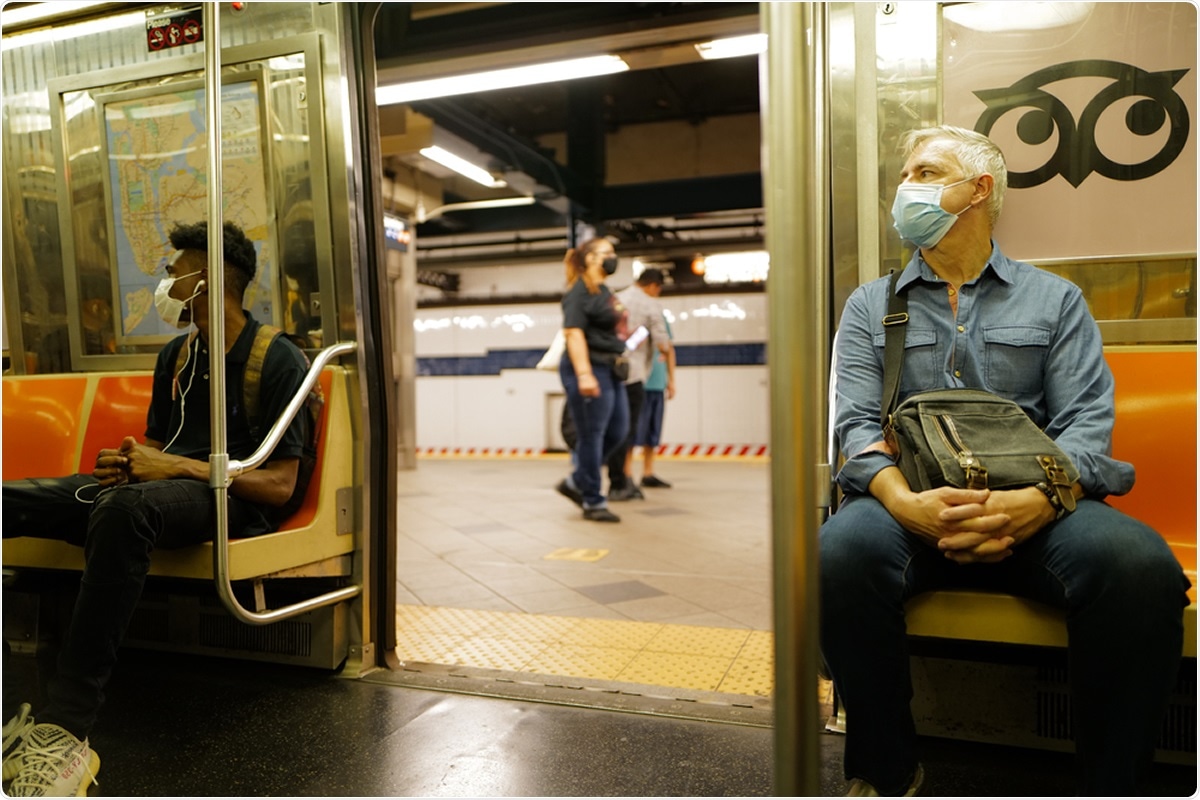The United States reports that the highest number of SARS-CoV-2 cases, topping more than 6.62 million infections since it reported its first case in January. The epicenter of the outbreak in the country was in New York City, triggering the government to impose a lockdown to contain the spread of the virus.
A team of researchers at Columbia University and the New York City Department of Health and Mental Hygiene have shown that this move by the government was effective in reducing the spread of the severe acute respiratory syndrome coronavirus 2 (SARS-CoV-2), the virus that causes the coronavirus disease (COVID-19).
Along with the lockdown orders, authorities imposed mandated stay-at-home measures and school closures. The study, published on the preprint server medRxiv* in September, revealed that these measures have contributed to around a 70 percent reduction in SARS-CoV-2 transmission in New York City between the peak of the pandemic from March to June.

 This news article was a review of a preliminary scientific report that had not undergone peer-review at the time of publication. Since its initial publication, the scientific report has now been peer reviewed and accepted for publication in a Scientific Journal. Links to the preliminary and peer-reviewed reports are available in the Sources section at the bottom of this article. View Sources
This news article was a review of a preliminary scientific report that had not undergone peer-review at the time of publication. Since its initial publication, the scientific report has now been peer reviewed and accepted for publication in a Scientific Journal. Links to the preliminary and peer-reviewed reports are available in the Sources section at the bottom of this article. View Sources
Effective measures
The team highlighted how the lockdown measure implemented during that time was effective in stemming the virus spread. Apart from the considerable reduction in the transmission of COVID-19 in the city, the widespread use of masks or face coverings attributed to an additional 7 percent reduction, and up to 20 percent decreased among older adults during the first month universal masking was mandated in public areas.
“We estimate that the overall effective reproductive 16 number was 2.99 at the beginning of the pandemic wave and reduced to 0.93 one week after 17 the stay-at-home mandate. Most age groups experienced similar reductions in transmission,” the researchers wrote in the paper.
The team arrived at the study findings using data on cases, deaths, and mobility to approximate transmission. They also created a model to simulate the spread of the virus in the city of more than 8.3 million that has reported more than 200,000 COVID-19 cases and over 21,000 confirmed or probable deaths from April to June.
The study is in line with previous modeling studies that estimate that lockdowns had reduced the virus transmission by as much as 58 percent in Wuhan City in China, where the pandemic started, and 45 percent in France, and 77 percent in France.
Universal masking helps safe reopening
As much as lockdowns effectively curb the spread of the infection, they also take a toll on the economy, with many people losing jobs. Many countries have already lifted lockdown orders to help boost the economy and shift to a new normal.

Image Credit: CKY123 / Shutterstock
If New York City has maintained the same usage rate of masks or face coverings in April until June, the research team estimates that the overall COVID-19 transmission would have reduced by about 9 to 11 percent during reopening when people spend more time outside their homes.
If everyone wore masks the same degree as older adults, it could reduce transmission of the virus by as much as 28 to 32 percent when lockdown-like measures are lifted. The team emphasized that the estimates are different from those measuring the efficacy of face coverings in preventing COVID-19 when used correctly.
“Improving effective use of face coverings, especially among younger people, would significantly mitigate the risk of a resurgence in COVID-19 infections during reopening. We must find ways to boost consistent and correct mask use in settings where social distancing is not possible,” Dr. Jeffrey Shaman, Ph.D., professor of environmental health sciences at Columbia Mailman School, said.
The World Health Organization (WHO) and the U.S. Centers for Disease Control and Prevention (CDC) recommend that everybody should wear masks when going out of the house. Face covering is required and worn in public to help reduce COVID-19 spread.

 This news article was a review of a preliminary scientific report that had not undergone peer-review at the time of publication. Since its initial publication, the scientific report has now been peer reviewed and accepted for publication in a Scientific Journal. Links to the preliminary and peer-reviewed reports are available in the Sources section at the bottom of this article. View Sources
This news article was a review of a preliminary scientific report that had not undergone peer-review at the time of publication. Since its initial publication, the scientific report has now been peer reviewed and accepted for publication in a Scientific Journal. Links to the preliminary and peer-reviewed reports are available in the Sources section at the bottom of this article. View Sources
Article Revisions
- Mar 27 2023 - The preprint preliminary research paper that this article was based upon was accepted for publication in a peer-reviewed Scientific Journal. This article was edited accordingly to include a link to the final peer-reviewed paper, now shown in the sources section.